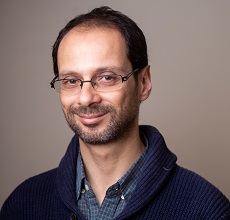
I am a computational neuroscientist (excuse my French) with a strong interest in finding basic principles of how nervous systems operate. And yet, I am spending several months on a secondment project to analyse spine x-rays to improve the diagnoses of neck injuries. Why am I doing this?
The reason is that the project involves a branch of artificial intelligence called “deep learning” to analyse the x-rays. Deep learning uses “deep” neural networks that learn to perform a task – here, to delineate each vertebral body – from a large number of examples. Each time the network is presented with an image, it makes a guess about where the vertebrae are and compares this outline with the right answer. As long as the guess is wrong, it learns from its mistakes to get better.
This project is giving me a hands-on experience with deep learning, which I believe could be useful to understand the computations done in real brain networks.
David Marr, a great computational neuroscientist, warned that we might not understand brain computations by studying neurons and the intricate structures they form. He drew an analogy with flight. The aeronautic enthusiasts who studied bird feathers’ intricate patterns never came close to designing a flying machine. The Wright brothers, instead, studied aerodynamics. They put a plank in a horizontal air flow, measured the resulting lift force on the plank, and determined how lift changed as they varied airspeed or the plank’s angle.
To formulate a theory of brain computations, we need a neuroscience analogue of the plank. Deep neural networks could be that plank. They learn to represent the “world” – in this case x-ray images – as a hierarchy of image features, and use this representation to produce an answer. Just like a brain. But, while we know how to train them, we do not understand how they analyse images, once trained.
Understanding how deep networks analyse images could give us insights into how our own brains are doing it. Deep networks are a dream-come-true experimental system for a neuroscientist. We know the precise “anatomy” of the network, and the state of each neuron during image processing. If we cannot understand deep networks, with their simple neurons and perfectly determined architecture, we may never understand the brain.
Learning about deep networks during my secondment project has taught me the necessary technical skills, and has given me clear ideas about how to understand these artificial intelligences. But for now, I am going back to spine x-rays.